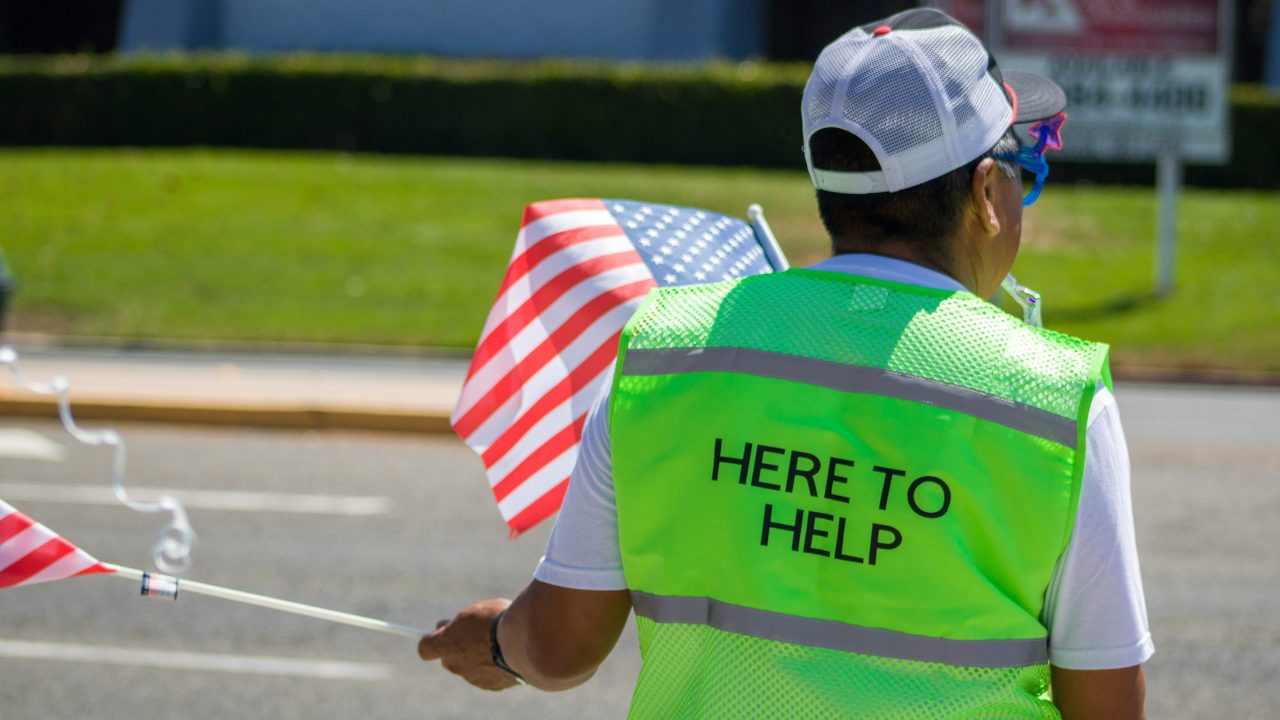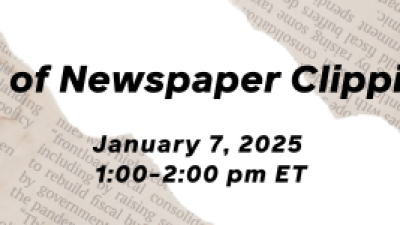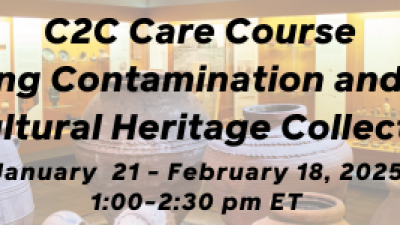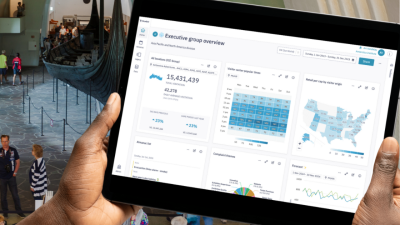
Are you taking a second look at your museum’s volunteer program? Maybe you’re struggling with flagging recruitment and retention, questioning how the diversity of your corps aligns with inclusion goals, or wrestling with how to integrate a siloed structure better into your organizational chart? (Or, very likely, all of the above and more?)
If so, you’re not alone. Between the long-term effects of the pandemic and the ongoing push to create more welcoming cultures, an increasing number of museums are rethinking the program models they’ve inherited, which are often many decades old and informed by outdated assumptions. Long-prevailing hallmarks of these models, including arduous training programs, intensive time commitments, and inflexible scheduling, are leading to declining ranks and stagnant demographics, many volunteer managers believe. Meanwhile, undefined reporting and authority structures are leading to tension and confusion, in some cases, as the organizational charts of museums evolve.
Still, there are compelling reasons for museums to engage volunteers, not only for the benefit of the institutions, but for the public themselves. Volunteer opportunities can be a meaningful chance to explore curiosities, interact with the community, make friends, and build skills. So, the question is: How can we design programs that maximize these positive outcomes, working with the goals of museums today and welcoming more (and more diverse) people in?
There may not be easy, one-size-fits-all answers, but between the growing body of successful examples, there is an emerging general framework. To figure out what that looks like, I spoke to two of the most knowledgeable sources I know: my AAM colleague Susan Zwerling, who wrote our Designing a Museum Volunteer Program toolkit (now in its second edition), and Elisa Kosarin, CVA, a longtime volunteer engagement consultant. With thanks to them, and the many volunteer managers who shared their experiences in publications I reviewed (see a selected list at the end of this post), I identified a basic six-step process for transforming a volunteer program.
Step 1: Talk to Stakeholders
Just because you have a mandate to “restructure” or “diversify” your program doesn’t mean you’re ready to start. Without agreed-upon parameters for what those words will mean in your case, you may not create anything but disarray. Instead of rushing into change for change’s sake, it’s best to start by talking with stakeholders about what you’re seeking to change, why you’re seeking to change it, and what the new vision for the program should be.
What stakeholders should you talk to?
- Board and leadership. Supportive and aligned leadership will give you the organizational pull to ensure change moves smoothly from concept to execution. In the best of cases, all sides will be on board with change, and these conversations will be about defining what change to prioritize. In more difficult cases, where you may need to do some convincing, program managers suggest emphasizing the opportunity to extend impact and align with organizational goals through program adjustments, as well as the liability for the museum’s reputation and visitor experience if it does not embrace change.
- Staff. Leadership and volunteer managers may not be fully aware of the staff needs that could use community support, especially in departments that haven’t traditionally worked with volunteers. For that reason, it’s a great idea to conduct a comprehensive needs assessment across the organization. Preferably in a structured, synchronous format, ask each department where they could ease their burdens and generate a list of potential volunteer opportunities in the areas they identify. Supporting public programs, helping in the garden, packing art supply boxes? Collecting protest ephemera or supporting voter registration drives? It’s all been done! Think big and think outside the box.
- Volunteers themselves. If possible, there is great value in getting your existing volunteers’ input, for several reasons. First, it avoids blindsiding your corps with any changes and can minimize the chances of a public backlash, as some museums have experienced when they’ve overhauled their programs. Second, it gives you the important perspective of the people who volunteer themselves, who may be more open to change—and more brimming with novel ideas—than you expect. If you have a smaller advisory group on your corps, like a volunteer board, you might consider starting with them.
What questions should you ask these stakeholders?
- Who are you trying to include? Remember, there are many kinds of diversity, including race and ethnicity, gender and sexuality, age, ability, economic status, national origin, languages spoken, and many other aspects of identity. As with diversity initiatives for audiences, you’re not likely to have much success if you try to be vaguely “inclusive” to all these categories at once, since different demographics will require different strategies. Instead, it’s best to define what aspects of diversity are lacking in your corps and what types would be most significant and realistic for your museum to gain. (For example, if you live in a city that’s 70 percent Latinx but your volunteers are all white, or a city with a median age of 35 but your volunteers are a median of 65, those could be good places to start.)
- What should volunteers do? There are multiple ways to transform a program, whether that’s tweaking existing opportunities, replacing those opportunities with others, or simply adding new opportunities. What departments will you assign volunteers to going forward, and what will they do in them? (This is where your needs assessment will come in handy.)
- Who should volunteers report to? Many institutions do not have a defined place for their volunteer programs on their organizational chart, which is one reason why power struggles and miscommunications can occur. Where should your program go? The field is divided on that issue. Some museums structure theirs within a dedicated volunteer management department, some nest them inside education and interpretation, some put them in visitor services, and some assign them to human resources, among other options. There may not be one right answer, but try to choose the one that will be least siloed and have the strongest relationships with the rest of staff.
Once you’ve spoken to these stakeholders and established the answers to these questions, you might consider putting them into a formal document, like a strategic plan for volunteer engagement, so you can share and cite those findings as you embark on the next step.
Step 2: (Re)design Your Roles
Now that you’ve identified lots of organizational needs that volunteers can support, and a vision for where you do and don’t want them to be working, your task is to narrow down this list and define specifics. (Think convergent vs. divergent thinking.) What are the best, most manageable ideas for new roles, and what will it take to get them up and running?
To maximize the impact of these new roles, and successfully recruit new people your current structure may be excluding, here are a couple questions to keep in mind:
- How long should the assignment last? Museums tend to automatically envision long-term or indefinite volunteer positions, with significant training upfront, but this level of commitment is likely to deter people with busier or less predictable schedules. (In fact, research suggests organizations that offer more flexible positions have had less trouble with recruitment and retention post-pandemic.) As you (re)design your roles, think about how you can vary their length and duration, giving people the ability to build their engagement over time. Assignments can be:
- One-time, such as supporting a special event or one-off pilot program
- Episodic, such as serving on a gala committee or assisting with an exhibition installation
- Regular, such as working a welcome desk or conducting educational outreach
- Where should the work take place? Another important aspect of flexibility is where the volunteers work. Do they need to be on site for their assignment (at the museum or another location), or can their work be fully or partially virtual? When possible, removing the need to commute to a specific location can make opportunities more attractive and feasible, particularly to those who have disabilities, those who live farther from your work site(s), or those who have limited free time. Even if some of the work for a role requires being on site, you might be able to reduce the burden by making parts of it virtual (or virtual-optional), like training, meetings, or administrative work.
To allow for this flexibility, you may be able to create multiple roles, even within the same departments or supporting the same needs. You might have some regular volunteers who sit at your welcome desk weekly, for example, while others greet visitors during public programs or popular exhibitions, and some speak to visitors from home via digital kiosks.
Step 3: Revisit Your Training
Once you know what roles you’ll be offering, and on what basis, it’s time to consider what training you’ll require for them and how you’ll administer it. This can be equally important to attracting diverse volunteers as varied durations and responsibilities. Long, detailed trainings—like the crash courses that are typical of many docent programs—can discourage would-be volunteers, not only for the sheer time (and sometimes money) they require, but for the sense of psychological commitment they impose. While you want your volunteers to feel well-prepared for their roles, you don’t want them to feel like they must undergo an elaborate initiation to join you. Make it easier for them to say yes to your program by providing efficient and flexible training appropriate for what the role will require. Consider:
- Time commitment. Can you reduce the length of trainings by distinguishing essential from supplemental information? Can you minimize the amount of information volunteers must learn by dividing their areas of responsibility?
- Location. Can you make trainings less demanding by offering them in fully or partially virtual formats, or hybrid/virtual-optional?
- Scheduling. Can you offer asynchronous trainings that volunteers can complete on their own time, or a mixture of synchronous and asynchronous? Can you schedule trainings outside of typical work hours, or offer alternatives for those who cannot make those times?
When aiming to increase diversity, you should also consider what training you might provide your corps to help them cultivate a welcoming environment and potentially discuss issues of identity with visitors.
Step 4: Rethink Your Recruitment
At this point in the process, you should have a new range of opportunities that are appealing and feasible to people with a variety of life situations. Now the only remaining question is how to reach those people and tell them about the opportunities.
Particularly if your museum and/or its existing program reaches a limited demographic, this will require thinking beyond traditional marketing or word of mouth. While it’s always a great idea to share opportunities through the museum’s communication channels, or to ask staff and volunteers to spread the word to their networks, this may not reach those outside of the demographics you’re already serving. Instead, you’ll need to think in terms of broad, proactive outreach to the community. Here are some strategies suggested by program managers at the International Spy Museum and Baltimore Museum of Art:
- Build a list of referral sources, such as young professional organizations, retired teacher associations, disability service organizations, and community centers. Reach out and ask if they can help communicate the opportunity to their members and patrons.
- Go out into the community. Visit gathering places like libraries and community fairs and tell people about your opportunities and the benefits of volunteering.
- Connect with local colleges and universities. Besides being full of people who are looking for skill-building opportunities, and can likely help with any age diversity goals, higher-learning institutions are a great way to connect with international students, who can help you diversify the languages spoken and national origin among your corps.
Step 5: Communicate Your Changes
Once you’re ready to unveil your revamped program, it will be important to communicate the changes carefully to your stakeholders, particularly existing volunteers. Ideally, you want to avoid alienating them during the transition, making it clear that you value their past contributions and welcome them to join the new structure going forward, if they are willing to embrace it.
Here are some suggestions from Justine Gregory Dodson, who overhauled Denver Art Museum’s volunteer program:
- Communicate what you’re changing (and why) as often and in as many venues as possible, such as newsletters, meetings, and learning management systems.
- Identify key stakeholders to communicate with one-on-one and address any misapprehensions with, such as volunteer leaders and known champions or challengers of change.
- Find ways to honor the past contributions of volunteers at your museum, such as plaque displays in your building or an “emeritus” program for those who retire from the program.
Step 6: Evaluate Your Changes
As with any new or updated program, you don’t want to stop developing once you’ve implemented the changes. Look for opportunities to gather feedback and data on how the revamped program is working. If your museum has a research and evaluation team, or the means to engage independent evaluators, this would be a good opportunity for partnership. If not, consider informal feedback mechanisms, like basic surveys, check-in conversations, or comment cards. Be sure to take any findings to heart and make any necessary adjustments that arise—they can make all the difference in your program’s success.
Further Reading
While this framework covers the basics of transforming your program, there are many more nuances to consider as you do so. Here are some AAM publications that will help you along the way:
- Rethinking the Status Quo by Jenny Woods, Brandi Shawn-Chaparro, and Abbey Earich
- Designing a Museum Volunteer Program by Susan Zwerling (Purchase required)
- How Can We Make Volunteer Programs More Inclusive and Accessible? By Susan Zwerling and Kia Hunter
- Do Volunteer Programs Need Reinventing for the Reopened Museum? By Susan Zwerling and Marcie Keller
- Questions an Organization Should Ask When Transitioning a Volunteer Program by Susan Zwerling, Jenny Woods, Justine Gregory Dodson, Mary Fernandez, and Brandi Shawn-Chaparro (AAM members only)
- Museums and Equity: Volunteers by Elizabeth Merritt
- How Volunteer Programs Are Embracing Diversity, Equity, Accessibility, and Inclusion by Elisa Kosarin
- How the National Air and Space Museum Took Volunteering Virtual by Elisa Kosarin









Valid suggestions, all, but I’ll suggest the intent better suits metropolitan museums with a larger population and more diverse base.
Ours is a very-small town history museum, and (sadly) most of our volunteers are not only few in number but also mostly board members over 60. Prior directorates have been insular and complacent, not seeking outreach to a community that is also heavily populated by retiree age residents. We are also on the coast in one of California’s largest counties, two-thirds of which is rural and unpopulated. The balance of the local populace is comprised of younger people holding down 2 to 3 jobs to keep home and families functional and at least healthy. This non-profit organization has just reached its 25th year, and frankly I’m not sure how much longer it can survive at the present rate of attrition and near stagnation.
Hello, I can’t say I am a museum expert because we are just starting our history museum now, but I have been in non-profit management for some time now. If your museum, town, and demographics are really as you described, the best you can do for your community is to have an exit strategy for transferring your museum’s content and knowledge to another museum with a growing audience. No matter how dismal your town and area you described have become, having an exit strategy will enable you to pass on the great research and content materials for posterity. Sometimes, knowing when to exit is best so a new chapter will be born. In your case, the new chapter (something new) may not happen at your museum, but at somewhere will be born. The best thing we could do for our community is to pass on what we have to someone else. Hope this helps!